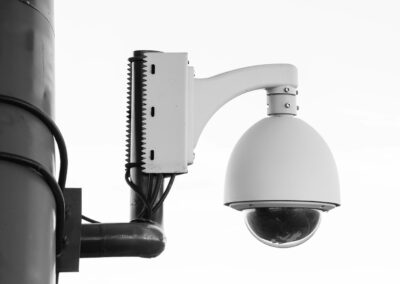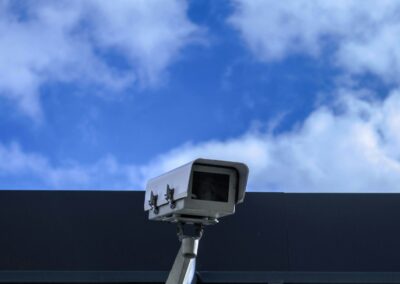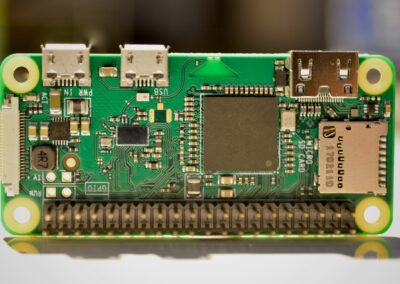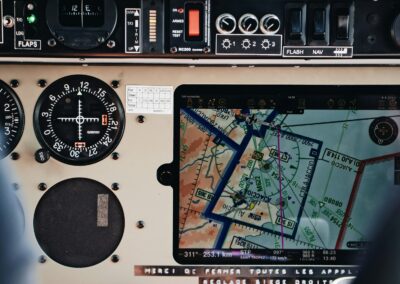Adopting Zero-Trust to Strengthen Cybersecurity in the Middle East
The Importance of a Zero-Trust Security Model
Can the adoption of a zero-trust security model significantly improve an organization’s cyber resilience posture? In today’s digital landscape, where cyber threats are increasingly sophisticated, traditional security models that rely on perimeter defenses are no longer sufficient. The zero-trust security model, which assumes that threats can originate both outside and inside the network, represents a paradigm shift in cybersecurity. This approach is particularly relevant for organizations in Saudi Arabia, the UAE, Riyadh, and Dubai, where the rapid adoption of modern technology necessitates robust cybersecurity measures.
The zero-trust security model is built on the principle of “never trust, always verify.” It requires strict identity verification for every person and device attempting to access resources on a network, regardless of whether they are inside or outside the network perimeter. This model emphasizes continuous monitoring and validation of user privileges, limiting access to only what is necessary for each user. By implementing a zero-trust security model, organizations can significantly reduce the risk of data breaches and ensure that their cybersecurity posture is resilient against both internal and external threats.
Moreover, the zero-trust model aligns well with the adoption of cloud services and remote work environments, which are becoming increasingly common in the Middle East. As businesses in Saudi Arabia and the UAE continue to embrace digital transformation, the zero-trust approach provides a comprehensive framework to secure their digital assets. It ensures that sensitive data is protected, even when accessed from remote locations, thereby enhancing overall cyber resilience.
Enhancing Cyber Resilience with Zero-Trust Architecture
The implementation of a zero-trust security model can significantly enhance an organization’s cyber resilience. This is achieved through continuous verification and a robust framework that identifies and mitigates potential threats in real-time. By integrating advanced technologies such as artificial intelligence and machine learning, the zero-trust model can detect anomalies and respond to cyber threats more effectively.
One of the critical components of the zero-trust architecture is micro-segmentation. This technique involves dividing the network into smaller, isolated segments, each with its security controls. Micro-segmentation limits the lateral movement of attackers within the network, making it more challenging for them to access critical systems and data. For businesses in Riyadh and Dubai, adopting micro-segmentation can significantly reduce the attack surface and enhance the overall security posture.
Another essential aspect of the zero-trust model is multi-factor authentication (MFA). MFA requires users to provide two or more verification factors to gain access to a system, adding an extra layer of security. This is particularly important for organizations dealing with sensitive information, such as financial institutions and healthcare providers in the UAE. By implementing MFA, businesses can ensure that only authorized individuals can access their systems, thereby preventing unauthorized access and reducing the risk of data breaches.
Implementing Zero-Trust: Leadership and Management Strategies
Successfully adopting a zero-trust security model requires strong leadership and effective management strategies. Business executives and mid-level managers must understand the importance of zero-trust and be committed to its implementation. This involves staying informed about the latest cybersecurity trends, evaluating the benefits and challenges of zero-trust, and developing a comprehensive strategy to integrate it into the organization’s security framework.
Leadership plays a crucial role in driving the cultural shift necessary for zero-trust adoption. Executives must foster a security-first mindset across the organization, emphasizing the importance of cybersecurity at all levels. This includes providing ongoing training and awareness programs to ensure that employees understand their role in maintaining a secure environment. In Saudi Arabia and the UAE, where digital transformation is a key priority, fostering a culture of cybersecurity is essential for protecting critical infrastructure and ensuring business continuity.
Project management skills are also vital for the successful implementation of a zero-trust security model. This involves planning, coordinating, and monitoring the deployment process, ensuring that all components are integrated seamlessly. Project managers must identify potential risks, manage resources effectively, and maintain clear communication with all stakeholders. By adopting a structured approach to zero-trust implementation, organizations can overcome challenges and achieve their cybersecurity goals.
Future Directions: Integrating Emerging Technologies with Zero-Trust
The future of cybersecurity in the Middle East is closely linked to the integration of emerging technologies with the zero-trust security model. Artificial intelligence (AI) and machine learning (ML) are at the forefront of this evolution, providing advanced capabilities for threat detection and response. By leveraging AI and ML, organizations can enhance their zero-trust architecture, enabling real-time analysis of network traffic and the identification of suspicious activities.
Blockchain technology also holds significant potential for enhancing zero-trust security. Blockchain’s decentralized and immutable nature makes it an ideal solution for securing transactions and verifying identities. For businesses in Riyadh and Dubai, adopting blockchain can provide a secure and transparent framework for managing digital identities and ensuring data integrity.
The metaverse, a virtual reality space where users can interact with a computer-generated environment and other users, offers exciting possibilities for the future of zero-trust security. In the metaverse, businesses can create virtual environments for secure collaboration and training, enhancing their cybersecurity capabilities. By integrating zero-trust principles into the metaverse, organizations can ensure that their virtual spaces are secure and resilient against cyber threats.
Conclusion: Embracing Zero-Trust for a Secure Future
In conclusion, the adoption of a zero-trust security model can significantly improve an organization’s cyber resilience posture. By implementing a comprehensive framework that emphasizes continuous verification, micro-segmentation, and multi-factor authentication, businesses can protect their digital assets and ensure that their cybersecurity measures are robust and effective. The integration of emerging technologies such as AI, blockchain, and the metaverse further enhances the capabilities of zero-trust, creating a secure and adaptive environment for modern enterprises.
Business leaders, mid-level managers, and entrepreneurs in Saudi Arabia, the UAE, Riyadh, and Dubai must recognize the strategic importance of zero-trust and invest in its implementation. By fostering a culture of cybersecurity, providing ongoing training, and adopting effective project management strategies, organizations can harness the power of zero-trust to achieve long-term success and resilience. The future is bright for zero-trust security, and those who embrace its potential will lead the way in safeguarding their digital future.
#ZeroTrustSecurity #CyberResilience #Cybersecurity #ModernTechnology #BusinessSuccess #LeadershipSkills #ProjectManagement #SaudiArabia #UAE #Riyadh #Dubai























